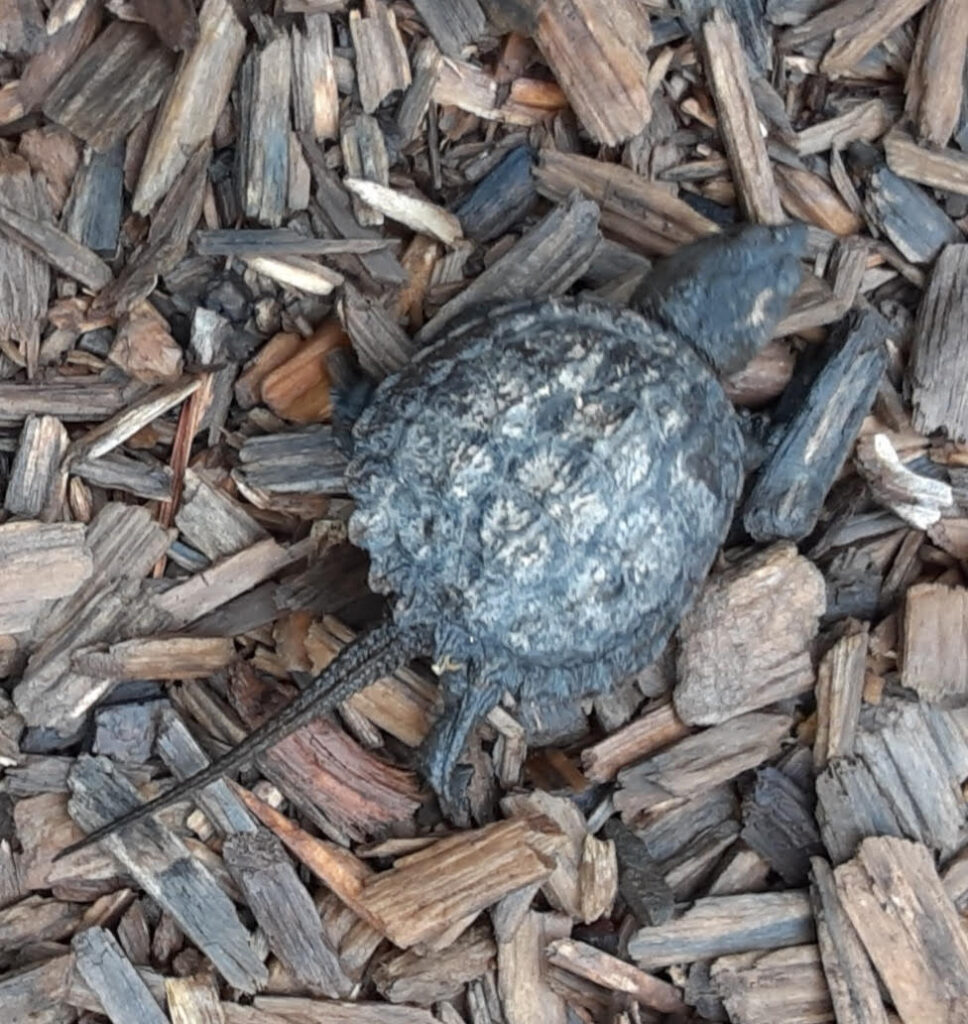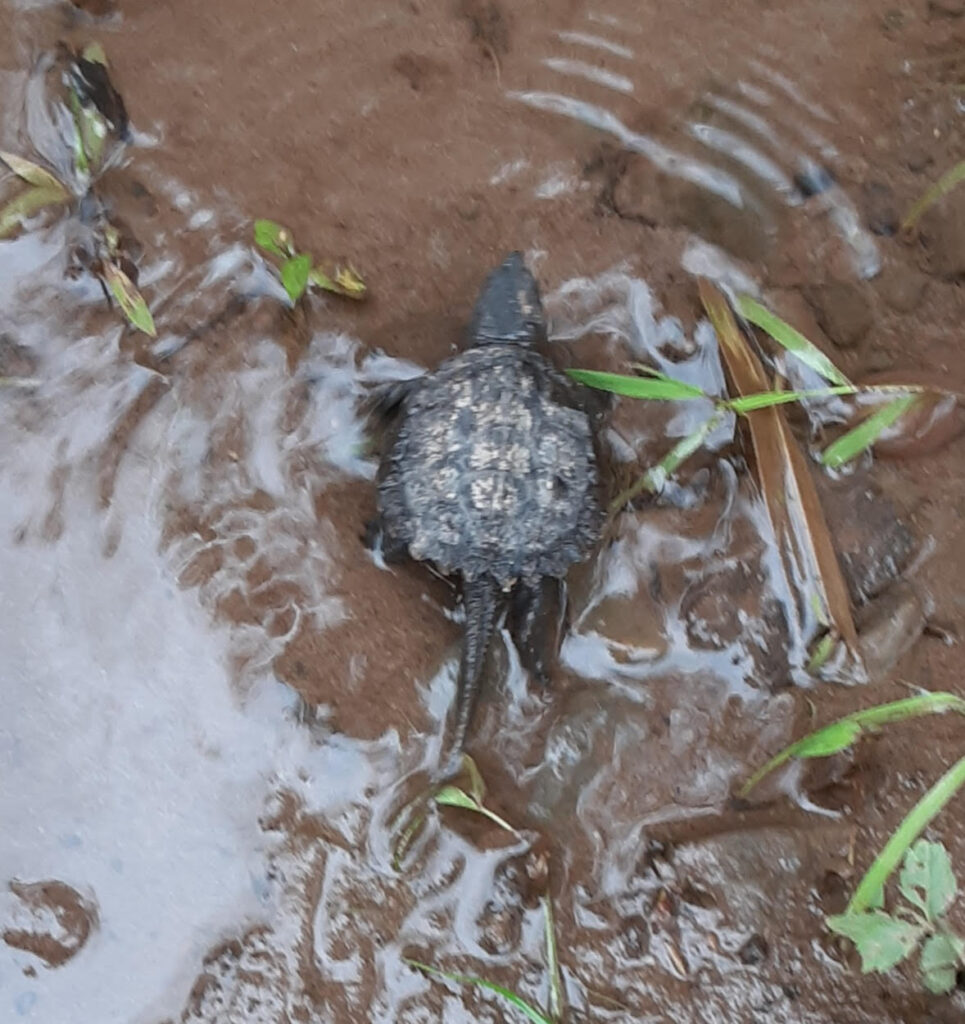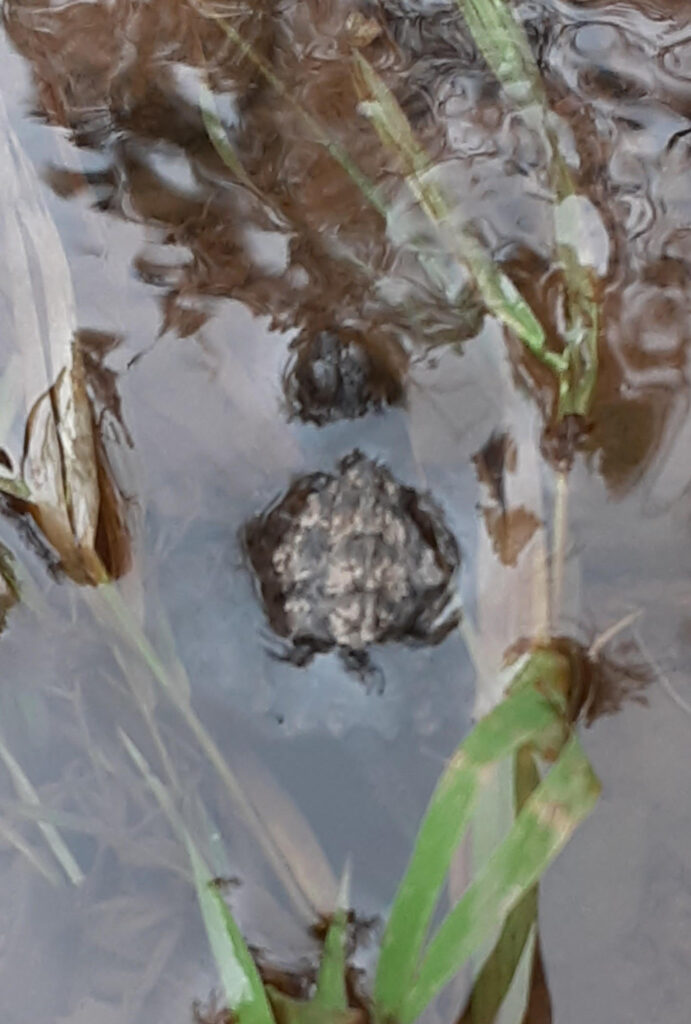By Susan Sprout
A surprising find, in the truck room of our local volunteer fire company – a baby snapping turtle! Coming back from a midnight fire call, my Safety Officer husband and the Assistant Chief saw a small dark shadow moving from the back wall of the station house toward the front doors. A lucky rescue for this silver-dollar-size hatchling that undoubtedly had been fending for itself from the minute it struggled out of its leathery, ping pong ball-shaped egg and began digging upward.

In the spring, female snapping turtles looking for suitable places to dig holes and lay twenty to eighty eggs, have been found up to a mile away from the water sources that were their homes. Nine to eighteen weeks later (depending on the temperature), the sand pile over the eggs erupts as hatchlings make a run for it toward the nearest stream, swamp, pond. They do not stick together, but go singly to learn about the world, instinctively heading for water. The firehouse snapper may have sensed wetness and entered to check it out. That got it a free ride to a local stream the next day where it crawled right in and swam away.
It did not have to learn hard lessons on the way to water: nest predators (minks, weasels, skunks, raccoons) nor wayside predators (dogs, crows, motor vehicles). In the water, other predators (bigger turtles, fish, and snakes, herons from above) will provide much needed life lessons.

Snapping turtles spend most of their lives underwater – a nice muddy bottom to overwinter and lots of dense vegetation for hiding and eating. At least a third of their diet is made up of green plants. Since they are omnivores, they will start hunting smaller animals first (aquatic insects, spiders, worms, tadpoles, tiny fish) and work their way up to larger animals as they grow – grow into excellent ambush predators (birds, small mammals, other reptiles, faster amphibians) using the patience for waiting in stillness and lightning quick reflexes for grabbing their prey.

Our little firehouse snapper could grow up to two feet in length, weighing twenty-five to thirty-five pounds on average. In my mind, I try to picture a fully grown turtle with algae or moss growing on its carapace, or shell, hanging relaxed in a pond with only the nostrils on the tip of its snout protruding. The three small bumps on the top of its shell when younger, flattened by growth. And definitely not being the kind of turtle that retreats into a shell when frightened or maltreated. Heavens, no! It will snap and bite at the slightest excuse, make hissing noises and, perhaps, release a musty odor. With claws as sharp as bears’, strong hooked jaws, a large head with a longer neck, and powerfully-muscled legs of a body that just won’t all fit in the comparatively small shell, this turtle will do damage. Here, the only things snapping turtles have to fear are pollution, habitat destruction, food scarcity, and road mortality.
Snapping turtles are native to the North American Continent from Nova Scotia to Florida and west to the edge of the Rocky Mountains. They are the largest of our freshwater turtles. If taken for food, their flesh may contain concentrations of toxic environmental pollutants. If found on a roadway, picking one up by the tail can severely injure its spinal column and pulling one could abrade its flesh possibly causing infection. Coaxed onto a blanket, tarp or sheet before dragging is a healthier (for it) and safer (for you) way to save a snapping turtle from road mortality.

